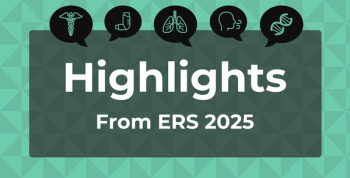
FDA Approves Nerandomilast for Idiopathic Pulmonary Fibrosis
The approval is the first in more than a decade for an idiopathic pulmonary fibrosis treatment.
The FDA has approved nerandomilast (Jascayd; Boehringer Ingelheim) for the treatment of adults with idiopathic pulmonary fibrosis (IPF).1 Nerandomilast's approval marks the first for a novel IPF therapy in more than 10 years, offering patients with the rare, incurable lung condition a new option.
Data from the randomized, placebo-controlled, double-blind FIBRONEER-IPF trial (
In FIBRONEER-IPF, patients were randomized 1:1:1 to receive nerandomilast at 9 mg twice daily, nerandomilast at 18 mg twice daily, or a placebo twice daily until the last patient received treatment for 52 weeks. The blinded trial duration was up to 91 weeks, and the end of trial duration was up to 109 weeks. The primary end point was absolute change from baseline in forced vital capacity (FVC) in mL at 52 weeks.
The trial showed significantly less decline in absolute FVC from baseline among patients who received nerandomilast vs placebo. In the nerandomilast cohorts, the adjusted mean decline in FVC was –106 mL in the 18-mg group and –122 mL in the 9-mg group. In the placebo group, the adjusted mean decline was –170 mL.
In Trial 2, 147 patients with IPF with or without previous antifibrotic treatments (nintedanib or pirfenidone) were randomized 2:1 to receive either nerandomilast at 18 mg twice daily or a twice-daily placebo for 12 weeks. Patients taking nerandomilast experienced a 91 mL decline in FVC at 12 weeks (95% CI, 44-138).
The most common adverse reactions associated with nerandomilast were diarrhea, COVID-19, upper respiratory tract infection, depression, decreased weight, decreased appetite, nausea, fatigue, headache, vomiting, back pain, and dizziness. Diarrhea was most commonly associated with treatment discontinuation.
"In a perfect world where payers are not an issue, I see nerandomilast becoming a first-line agent for this disease, and that's both because of the primary efficacy data, but also the tolerability and safety," FIBRONEER steering committee member Justin M. Oldham, MD, PhD, MS, pulmonary fibrosis specialist, director of interstitial lung disease, and clinical associate professor of internal medicine at the University of Michigan Medical School, told The American Journal of Managed Care® in an interview at the
At ERS, pooled data from FIBRONEER-IPF and FIBRONEER-ILD (
IPF is a chronic condition that develops when lung tissue becomes thick and stiff for unknown reasons, causing permanent scarring called fibrosis that makes breathing increasingly difficult.5 By inhibiting PDE4B, nerandomilast allows for increased intracellular cyclic adenosine monophosphate levels and reduces the expression of profibrotic growth factors and inflammatory cytokines that are overexpressed in IPF.2
"It's a safe drug," Oldham added.3 "There was some diarrhea with it, but hardly anybody stopped the trial because of diarrhea, and it was much less than we see in nintedanib—so, effective [and] safe. There were no LFT [liver function test] abnormalities, so we're not going to have to follow longitudinal liver function tests in these patients. For me as a clinician, it's a no-brainer that this is first-line therapy."
References
1. FDA approves drug to treat idiopathic pulmonary fibrosis. FDA. News release. October 7, 2025. Accessed October 7, 2025.
2. Jascayd. Prescribing information. FDA; 2025. Accessed October 7, 2025.
3. Shaw M, Oldham J. Nerandomilast a "no-brainer" for first-line pulmonary fibrosis therapy: Justin M. Oldham, MD, PhD, MS. AJMC. September 29, 2025. Accessed October 8, 2025.
4. Pooled data presented at ERS: nerandomilast monotherapy linked to nominally significant reduction in risk of death in IPF and PPF. Boehringer Ingelheim. News release. September 29, 2025. Accessed October 7, 2025.
5. What is idiopathic pulmonary fibrosis? National Heart, Lung, and Blood Institute. Updated June 26, 2023. Accessed October 8, 2025.
Newsletter
Stay ahead of policy, cost, and value—subscribe to AJMC for expert insights at the intersection of clinical care and health economics.













































